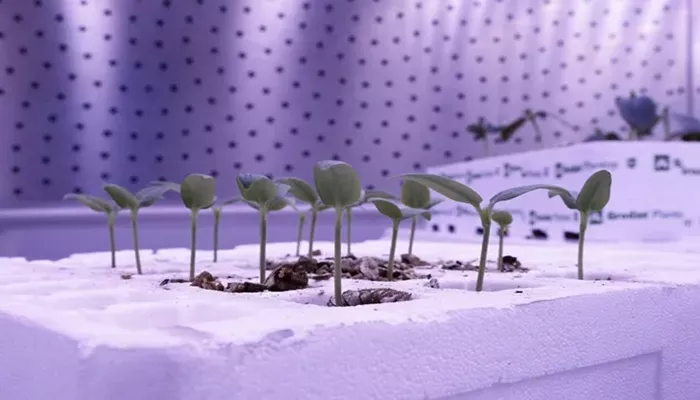Tomato Plant Propagation in Vertical Farms Poised for Success.
Artechno is optimistic about the future of tomato plant propagation in vertical farms following successful trials with its AVF+ Young Plant system. Sven Duijvestijn, a vertical farming sales consultant at Artechno, reports growing interest from investors as the system moves from demonstration to practical application.
Successful Trials
In De Lier, Artechno has been testing the AVF+ Young Plants system since late last year. The tests, which were initiated in response to a client’s request, mark a significant step forward in the propagation of tomato plants in vertical farms. While previous attempts at vertical tomato propagation have faced challenges, recent technical advancements have improved early-stage propagation success.
The grafting process, which is highly sensitive and requires precise management of rootstock and shoot, typically occurs in a plastic tunnel greenhouse within a glass greenhouse. This setup often suffers from suboptimal climate conditions, making it challenging to prevent losses. “The process heavily depends on the grower’s expertise and a well-controlled climate,” Duijvestijn explains.
In collaboration with a Dutch plant nursery, Artechno’s trials achieved a notable reduction in losses. The AVF+ Young Plants Compact system managed to reduce graft healing losses to just 2% after two cycles and reached a 100% success rate after four cycles. “Our goal was to keep losses under 5%, and we exceeded that expectation,” Duijvestijn says. However, propagating plants under high solar radiation remains a challenge.
Energy Efficiency
Vertical farming offers a significant advantage in energy efficiency. Unlike traditional greenhouses, vertical farms do not experience seasonal temperature variations, allowing for a fully controlled climate. This setup enables cost-effective large-scale propagation. “In vertical farming, the system’s energy needs are minimal compared to greenhouse propagation,” Duijvestijn notes.
Greenhouses often provide more sunlight than necessary, leading to excess heat and increased cooling requirements. “Our system avoids these issues by maintaining optimal light levels and temperatures,” Duijvestijn adds. Artechno’s calculations show that their system is cost-competitive, and they are now working with clients to refine the configuration for optimal propagation.
Accelerated Growth
Artechno has also explored multi-layer propagation for other crops, such as chrysanthemums and kalanchoes, in addition to tomatoes. Trials have shown promising results, with kalanchoe plants rooting up to 30% faster and budding sooner. In tomato trials, the graft healing period was reduced from seven days to five, with the potential to achieve four days with further adjustments.
The advancement of robotics in grafting requires uniform plants, a condition well-suited to the controlled environment of vertical farms. This uniformity enhances the efficiency of propagation processes.
Looking Ahead
Artechno sees great potential for increasing plant density in vertical farms. The AVF+ Young Plants Compact system requires six to seven times less space for propagation compared to traditional greenhouses. By integrating vertical farming systems into greenhouse operations, growers can achieve high-density propagation in a fraction of the space.
With promising results in tomato propagation, Artechno anticipates the first AVF+ Young Plants Compact will be operational by late 2024 or early 2025. International interest is also growing, with options like the AVF+ Freestyler and AVF+ Explorer offering additional flexibility for greenhouse integration and research. “Vertical farming holds the potential for significant advancements in many crops, extending beyond the lettuce and herbs where it has already proven successful,” Duijvestijn concludes.


